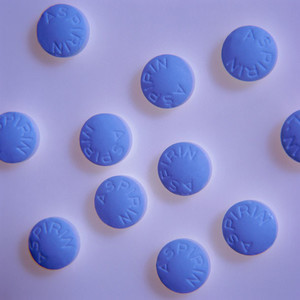A variety of financial and non-financial incentives are intended to encourage generic prescribing. Physician budgets are used by Germany and UK and seem to encourage generic prescribing. Assistance in terms of electronic prescribing, medicines databases, audit and feedback on prescribing data, guidelines and formularies tend to be voluntary and have a limited impact. Denmark and the UK teach medical students to prescribe by INN rather than brand name. Portugal requires prescription by INN if a generic product exists. Physicians see this as a restriction on their prescribing freedom in Belgium and France and resist such moves.
Incentives to use generic medicines
Generics/Research
|
Posted 01/10/2010
 0
Post your comment
0
Post your comment

Generic substitution by a pharmacist means that when a physician prescribes a specific medicine, the pharmacist either may, or must, replace it by a generic medicine. In 2004 generic substitution was legally permitted in 70% of countries surveyed. The exact rules vary. Where generic substitution is allowed, physicians can override a decision to substitute in 89% of countries by annotating the prescription. The pharmacist has a duty to inform the patient that a substitution has been made.
Generic substitution must be financially attractive to pharmacists if it is to be successfully implemented. Remuneration as a fixed percentage of the cost encourages delivery of originator drugs in Portugal and Spain. Choosing to dispense generics is financially neutral in Belgium and advantageous in France and The Netherlands.
Patient co-payment makes the patient aware of the cost of their medicines. It may take the form of payment of a percentage of the cost of medicine (36% of countries), payment if the selected medicine is above a reference price (34% of countries), a fixed amount per prescription or another form. However, the financial pressure dissipates if the patient has insurance above the minimum obligatory level (as is common in France). If the co-payment is a percentage of the cost of medicines, patients have a financial incentive to demand cheaper generic medicines. For instance, in Poland, physicians tend to prescribe generic medicines because they are conscious of the limited ability of patients to meet co-payments and because they have long-term, positive experience with generic medicines. Patient co-payments may reduce access and equity and there is a cost in operating the system.
Related articles
An industry view of generic manufacturing
Pricing strategies in generic medicines
Can we have our cake and eat it?
The current EU regulatory framework governing biosimilars
Technical challenges in defining mAbs
What clinical trials will be required for biosimilar mAbs?
International comparison of generic medicine prices
European generic prescribing trends and biosimilars
References
Simoens S. Trends in generic prescribing and dispensing in Europe. Expert Rev Clin Pharmacol. 2008;1(4):497-503.
Gosden T, Torgerson DJ. The effect of fundholding on prescribing and referral costs: a review of the evidence. Health Policy. 1997;40(2):103-14.
Wilkin D, Coleman A, Dowling B et al. National Tracker Survey of Primary Care
Groups and Trusts 2001/2002: Taking Responsibility? National Primary Care Research and Development Centre. Manchester and King’s Fund, London, UK. 2002.
European Generic Medicines Association (EGA). A review on the European generic pharmaceutical market in 2005. EGA, Brussels, Belgium. 2005.
Antoñanzas F, Oliva J, Pinillos M, et al. Economic aspects of the new Spanish laws on pharmaceutical preparations. Eur J Health Econ. 2007;8(3):297-300.
Gouveia Pinto C, Teixeira I. Pricing and reimbursement of pharmaceuticals in Portugal. Eur J Health Econ. 2002:3(4):267-70.
Willert PL. Assessment of the pharmaceutical market in Poland after accession to the European Union. Eur J Health Econ. 2007;8(4):347-57.
Most viewed articles
The best selling biotechnology drugs of 2008: the next biosimilars targets
Global biosimilars guideline development – EGA’s perspective
Related content
Japan’s drug shortage crisis: challenges and policy solutions
Saudi FDA drug approvals and GMP inspections: trend analysis
Generic medications in the Lebanese community: understanding and public perception
Community pharmacists’ understanding of generic and biosimilar drugs: Lebanon case study
Generic medications in the Lebanese community: understanding and public perception

Generics/Research Posted 23/01/2024
Community pharmacists’ understanding of generic and biosimilar drugs: Lebanon case study

Generics/Research Posted 08/09/2023
The best selling biotechnology drugs of 2008: the next biosimilars targets








Post your comment